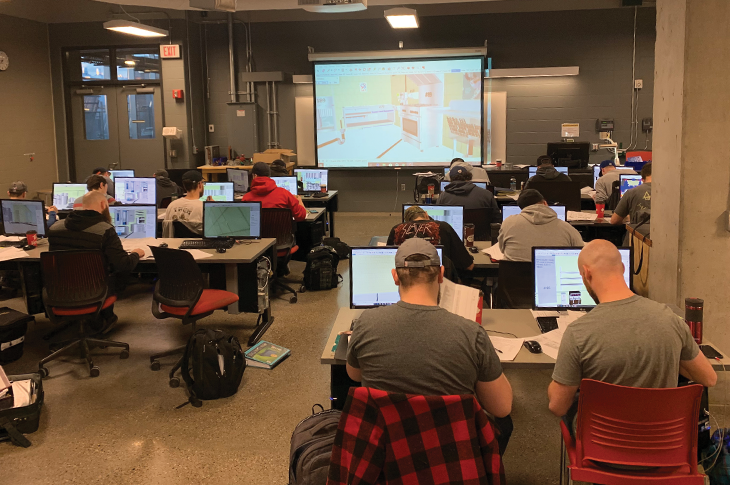Building a bigger picture with mixed reality teaching tools

As the School for Advanced Digital Technology (SADT) marks its first anniversary, it is inspiring innovative instructors and educators across SAIT to transform the way students — and future students — are learning.
Hands-on is hands-down the best way to accelerate individual uptake when learning the trades. That’s why apprenticeships have long been a staple in the construction industry. Visual, experiential learning provides context, and that helps make things make sense.
With 44 years of experience in the construction industry, Instructor Fred Bretzke appreciates how abstract the ins and outs of the sub-trades — plumbing, HVAC and electrical — can seem to those just starting out, and how the relationship between design and construction can present as distant and conflicted. Understanding the big picture is critical. And seeing is believing.
“I’ve always said to my students, ‘If you could only see through my mind.’” Well, now they can.
With support from his Dean and the SADT, Bretzke got his hands on Microsoft’s Hololens2, a mixed-reality device with which the user can introduce a virtual 3D model animation or hologram to a physical space (a room or “holodeck”). The Hololens2 turns the user’s fingers into digital avatars that can effortlessly manipulate the animation.
“I can make the 3D model sit in the palm of my hand, or I can augment it to a full one-to-one or one-to-ten scale,” says Bretzke. “I can walk my students through the buildings. They see what I see on their computers and can ask questions.” He’s eager for a digital lab to be completed on campus where students will be able to experience such immersive learning firsthand. “It’s the perfect teaching tool.”
Bretzke has already designed mixed-reality 3D models complete with power, water and drainage systems for his entire fourth-year curriculum. “I did it manually on my computer with each two-hour lesson taking about two weeks for me to build.” That’s not a sustainable approach but he’s found the solution and it lies in leveraging additional advanced digital technology already available elsewhere on campus.
New 360-degree digitizing cameras used in Building Information Modelling (BIM) can build digital models in under an hour. “You plant one of these cameras in the middle of a room and it digitizes the whole space for you in no time.”
Collaboration promotes a big-picture perspective and efficiencies. Visual learning helps students absorb more information with greater clarity in less time. And high tech can have low-tech applications.
Wanting more collaborative, interactive, project-based teaching opportunities, Bretzke put a different spin on ‘mixed-reality’ for another tool in his arsenal. He had tradespeople design and build a wooden dollhouse-size structure that students in the sub-trades could use to practise plumbing and electrical rough-ins. And he’s 3D-printing a stockpile of various pipe fittings made to scale. “Students can put it together like Lego.”
It’s an augmented teaching tool that’s virtually real.
This is an extended version of the section “Banging it up a notch — School of Construction,” part of the Innovation story "Smartening Up" from the print edition of the Fall 2021 issue of LINK.
Skills for the Future
We prepare students for successful careers and lives.
SAIT'S
2020-2025
Strategic plan